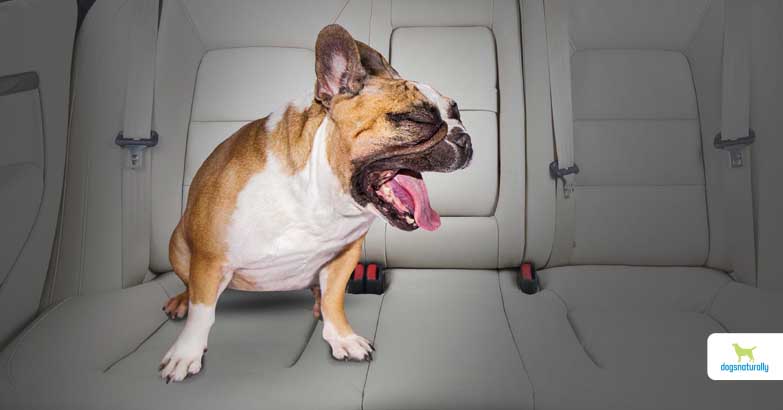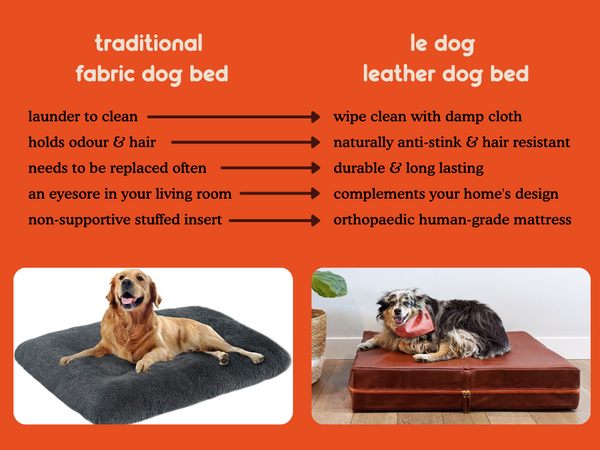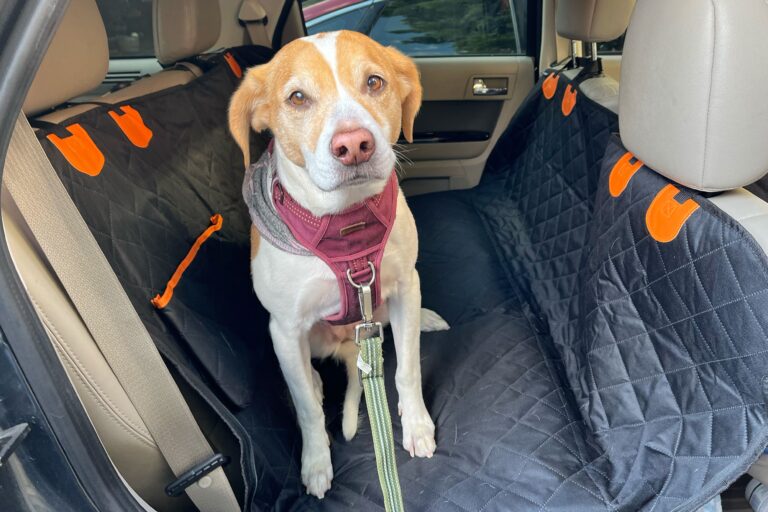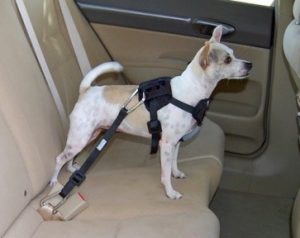How Do Dogs Act When They Get Car Sick? Signs & Solutions
Dogs drool excessively and vomit when they get car sick. They may also whine, pace, and appear lethargic.
Car sickness in dogs, also known as motion sickness, is a common issue. Puppies and young dogs are more susceptible due to their developing inner ears. Symptoms include drooling, vomiting, whining, and lethargy. Some dogs may also exhibit restlessness and anxiety.
Understanding the signs of car sickness can help pet owners manage the condition. Dogs can be trained to enjoy car rides through gradual acclimatization. Short trips, frequent breaks, and proper ventilation can also alleviate symptoms. Consulting with a vet can provide additional solutions, such as anti-nausea medications. Ensuring a positive travel experience for dogs improves their comfort and well-being.

Credit: animalsmatter.com
Introduction To Canine Car Sickness
Car sickness in dogs is a common issue many pet owners face. It occurs when a dog experiences nausea while traveling in a car. Understanding the causes and signs of car sickness can help in managing this condition. Recognizing the symptoms early is crucial for ensuring a comfortable journey for your furry friend.
Common Triggers For Car Sickness In Dogs
Dogs can experience car sickness due to various reasons. Here are some common triggers:
- Motion: The movement of the car can upset a dog’s inner ear.
- Stress: Anxiety about car rides can trigger sickness.
- Age: Puppies are more prone to car sickness as their inner ears are not fully developed.
- Smells: Strong odors in the car can make dogs feel nauseous.
Difference Between Car Sickness And Travel Anxiety
It’s important to distinguish between car sickness and travel anxiety. Car sickness involves physical symptoms, while travel anxiety is more psychological.
| Symptoms | Car Sickness | Travel Anxiety |
|---|---|---|
| Drooling | Yes | No |
| Vomiting | Yes | No |
| Panting | Sometimes | Yes |
| Whining | No | Yes |
| Pacing | No | Yes |
By understanding these differences, you can address the root cause of your dog’s discomfort. This knowledge can help in providing the right treatment or training.
Identifying Car Sickness In Dogs
Many dogs enjoy car rides. But some dogs can get car sick. It’s important to know the signs. Recognizing car sickness early helps your dog feel better. This guide will help you identify car sickness in dogs.
Physical Signs Of Nausea And Discomfort
Dogs show clear signs of nausea. These signs include:
- Excessive drooling
- Panting
- Yawning
- Whining
- Licking their lips
- Vomiting
If your dog drools a lot, they may feel sick. Panting and yawning are also common. Whining means they are uncomfortable. If they lick their lips often, they feel nauseous. Vomiting is a clear sign of car sickness.
Behavioral Changes During Car Rides
Behavioral changes are also noticeable. Your dog might:
- Be restless
- Show anxiety
- Refuse to get into the car
- Try to hide
- Seek your attention
Restlessness shows they are uncomfortable. Anxiety makes them nervous. They might refuse to get into the car. Hiding indicates fear. Seeking your attention means they want comfort.
Understanding these signs helps you help your dog. Recognizing car sickness is the first step to making car rides enjoyable. Knowing the symptoms and behaviors can make a big difference.
Why Some Dogs Get Car Sick
Many dogs experience car sickness, making travel difficult for them and their owners. Understanding why some dogs get car sick can help in managing this issue. This section will explore the role of the inner ear and motion sickness, as well as the impact of past experiences and conditioning.
Role Of The Inner Ear And Motion Sickness
The inner ear plays a crucial role in balance and spatial orientation. When a dog is in a moving car, the inner ear detects motion. This motion can confuse the brain, leading to motion sickness.
Dogs have a more sensitive inner ear compared to humans. Rapid or jerky movements can cause their inner ear to send mixed signals to the brain. These mixed signals can result in nausea, dizziness, and vomiting.
| Symptom | Description |
|---|---|
| Drooling | Excessive saliva production due to nausea. |
| Whining | Vocalizing discomfort during car rides. |
| Vomiting | Expelling stomach contents due to severe nausea. |
Impact Of Past Experiences And Conditioning
Past experiences can also contribute to car sickness in dogs. If a dog had a bad experience during a car ride, it might associate cars with discomfort or fear.
Conditioning is another factor. If a dog only rides in the car to visit the vet, it might start to associate car rides with stressful events. This association can trigger anxiety and nausea.
- Positive Reinforcement: Use treats and praise to create positive associations with car rides.
- Gradual Acclimation: Start with short trips, gradually increasing the duration.
- Comfort Items: Bring along a favorite toy or blanket to create a sense of security.
Understanding these factors can help in managing and reducing car sickness in dogs. By addressing the role of the inner ear and past experiences, owners can make car rides more pleasant for their furry friends.

Credit: wagwalking.com
Pre-ride Preparations To Prevent Car Sickness
When dogs get car sick, it can be distressing for both them and their owners. Proper preparation can help prevent car sickness and make car rides more enjoyable. This section covers essential pre-ride preparations.
The Importance Of Timing With Meals And Hydration
Feeding your dog at the right time is crucial. Avoid feeding your dog a large meal right before a car ride. A full stomach increases the chances of nausea. Feed your dog at least 3 hours before the trip. This gives them enough time to digest their food.
Hydration is also important, but don’t let your dog drink too much water before the trip. A small amount of water 30 minutes before the ride is ideal. This keeps them hydrated without making them feel sick.
Creating A Comfortable And Familiar Space In The Car
Dogs feel more secure in a familiar environment. Bring along their favorite blanket or toy. This provides comfort and reduces anxiety. Use a crate or a dog seat belt to keep them safe and secure. A secure dog is less likely to feel motion sickness.
Ensure the car is well-ventilated. Open the windows slightly to allow fresh air to circulate. This helps to reduce any car odors that might make your dog feel nauseous.
| Preparation | Details |
|---|---|
| Timing Meals | Feed 3 hours before the ride |
| Hydration | Small amount of water 30 minutes before |
| Comfort Items | Blanket, toy, crate, or dog seat belt |
| Ventilation | Open windows slightly for fresh air |
By following these preparations, you can help your dog feel more comfortable and reduce the chances of car sickness. A happy dog makes for a happy journey.
In-car Strategies To Reduce Sickness
Dogs can experience car sickness just like humans. This can make trips stressful for both pets and their owners. Thankfully, there are several in-car strategies to reduce sickness and help your furry friend feel better.
Managing Air Quality And Temperature
Keeping the air fresh and cool can make a big difference. Open windows slightly to allow fresh air to circulate. This can help reduce nausea. Make sure the car temperature is comfortable. A too-hot or too-cold car can increase discomfort. Using air conditioning or heating can help maintain a balanced temperature.
Using Distractions And Toys To Reduce Stress
Distractions can keep your dog’s mind off their discomfort. Bring their favorite toys for the ride. Toys can provide a familiar and comforting presence. You can also use chew toys to keep them occupied. This can divert their attention from feeling sick.
| Strategy | Details |
|---|---|
| Air Quality | Open windows slightly for fresh air |
| Temperature Control | Maintain a comfortable temperature inside the car |
| Distractions | Bring their favorite toys and chew toys |
- Ensure your dog is comfortable with the car environment before long trips.
- Practice short trips to help your dog get used to the motion.
- Always praise and reward your dog after a successful trip.
Natural Remedies And Solutions
Car sickness in dogs can be distressing for both pets and owners. Luckily, there are natural remedies and solutions that can help alleviate your dog’s discomfort. These options are safe and effective, providing relief without the need for medication.
Herbal Supplements And Their Effectiveness
Many herbal supplements can help dogs with car sickness. These supplements are natural and have fewer side effects. They can be given to dogs before car rides to reduce nausea.
| Herbal Supplement | Benefits |
|---|---|
| Chamomile | Calms the stomach and reduces anxiety. |
| Peppermint | Helps with digestion and reduces nausea. |
| Fennel | Soothes the digestive tract. |
These herbs can be found in various forms such as powders or capsules. Ensure you consult your vet before starting any new supplement.
Ginger And Its Benefits For Nausea
Ginger is a well-known remedy for nausea in humans. It works wonders for dogs too. Ginger helps settle the stomach and can be very effective.
- Grate fresh ginger and add a small amount to your dog’s food.
- Use ginger snaps or ginger biscuits as a treat before the trip.
- Ginger supplements specifically made for dogs are also available.
Always start with a small dose to see how your dog reacts. Too much ginger can cause stomach upset.
When To Consult A Veterinarian
Car sickness in dogs can be distressing for both the pet and the owner. Recognizing when to consult a veterinarian is crucial. Not all car sickness is a simple issue. Sometimes, it can be a sign of a deeper medical problem.
Understanding When Car Sickness Is A Medical Issue
Car sickness in dogs usually shows through drooling, whining, or vomiting. If symptoms are frequent, it could be more than just motion sickness. Look for these signs:
- Repeated vomiting
- Excessive drooling
- Unusual behavior
- Lethargy
- Loss of appetite
Persistent symptoms can indicate an underlying health issue. If your dog shows these signs, it’s time to see a vet.
Treatment Options And Medications
Veterinarians have several ways to help dogs with car sickness. Here are some treatment options:
| Option | Description |
|---|---|
| Medications | Anti-nausea drugs can help. A vet will prescribe the right one. |
| Behavioral Therapy | Gradual exposure to car rides can reduce anxiety. |
| Natural Remedies | Ginger supplements and herbal treatments can soothe nausea. |
Always consult a veterinarian before starting any treatment. They will recommend the best solution for your dog’s needs.
Training And Behavioral Techniques
Training and behavioral techniques can help your dog overcome car sickness. These methods can ease anxiety and discomfort. They make car rides more enjoyable for your furry friend.
Desensitization And Gradual Exposure To Car Rides
Desensitization is a method that involves slowly introducing your dog to car rides. It helps them get used to the experience.
- Start with sitting in the parked car without turning on the engine.
- Reward your dog with treats and praise for staying calm.
- Gradually increase the time spent in the parked car.
- Once comfortable, turn on the engine but stay parked.
- Take short trips around the block and increase the duration slowly.
Positive Reinforcement To Create A Pleasant Association
Positive reinforcement can help your dog associate car rides with good things. This method involves using treats, toys, and praise.
- Give your dog a favorite toy or treat when they enter the car.
- Use calm, soothing tones to keep them relaxed.
- Reward calm behavior during the ride with treats and praise.
- End each trip with a fun activity like a walk or playtime.
These techniques build a positive connection with car rides. They help reduce anxiety and car sickness. With patience and consistency, your dog will feel more comfortable in the car.
Conclusion: Ensuring A Smooth Ride For Your Canine Companion
Making sure your dog enjoys car rides can be challenging. Dogs may experience car sickness just like humans. Understanding how to prevent and manage this is crucial for a happy journey.
Recap Of Preventative Measures And Solutions
Preventing car sickness in dogs involves several strategies. Below is a table summarizing key measures and solutions:
| Preventative Measure | Description |
|---|---|
| Gradual Exposure | Introduce your dog to the car slowly. Start with short trips. |
| Comfortable Environment | Ensure your dog feels secure. Use a crate or seatbelt harness. |
| Proper Ventilation | Keep the car well-ventilated. Fresh air can reduce nausea. |
| Feeding Schedule | Avoid feeding your dog right before the trip. A light meal hours before is better. |
| Frequent Breaks | Take regular stops during long trips. Allow your dog to stretch and relieve itself. |
The Importance Of Patience And Persistence
Dealing with a car-sick dog requires patience. Changes won’t happen overnight. Be consistent with the preventative measures.
Persistence is key. Keep exposing your dog to short car rides. Gradually increase the duration as they become more comfortable.
Remember, each dog is different. What works for one may not work for another. It’s essential to find the right balance and routine for your furry friend.
Lastly, consult your veterinarian for advice. They may recommend medications or other solutions tailored to your dog’s needs.

Credit: www.dogsnaturallymagazine.com
Frequently Asked Questions
How Do I Tell If My Dog Gets Car Sick?
Watch for drooling, whining, excessive licking, vomiting, or restlessness during car rides. These signs indicate car sickness in dogs.
How Long Does Car Sickness Last For Dogs?
Car sickness in dogs usually lasts until the motion stops. Symptoms can persist for a few hours post-travel.
How To Help A Carsick Puppy?
Keep car rides short and gradually increase duration. Use a crate for comfort. Avoid feeding before travel. Offer fresh air and frequent breaks. Consult a vet for medications if needed.
Is My Dog Car Sick Or Anxious?
Your dog may be car sick if it vomits or drools excessively. Anxiety shows through restlessness, whining, or pacing. Consult your vet for a proper diagnosis.
Conclusion
Understanding how dogs act when they get car sick is crucial for pet owners. Recognizing symptoms early helps alleviate discomfort. Simple measures, like frequent breaks and proper ventilation, can make a big difference. Always consult with your vet for the best advice.
Your furry friend’s comfort should always come first on any journey.
- Can I Get in a Taxi Without a Car Seat? - January 26, 2025
- Can I Get Chlamydia From a Toilet Seat? - January 26, 2025
- Can I Get an Uber With a Car Seat? - January 26, 2025






